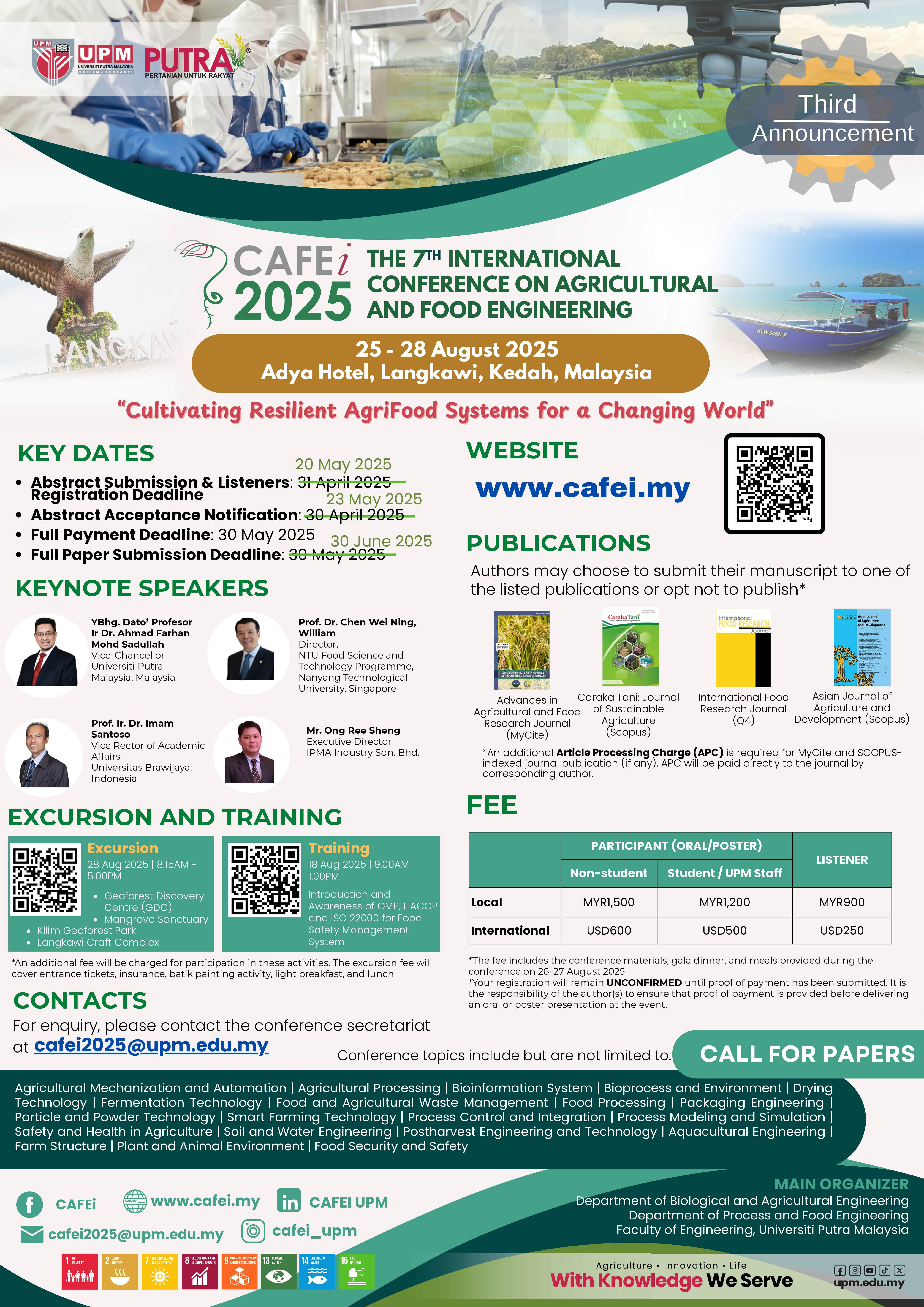The Initiative to Further Enhance Technology Adoption in the Malaysian Oil Palm Industry
DOI:
https://doi.org/10.36877/aafrj.a0000413Abstract
The oil palm industry is facing highly severe labour shortages where most labourers involved in the plantation consist of foreign workers. The usage of manual labourers revealed several negative drawbacks which has caused lower productivity in the oil palm industry. Hence, the Malaysian Palm Oil Board (MPOB) has made continuous efforts to enhance the efficiency of oil palm plantations by providing assistance in mechanisation and engineering technologies. This covers from the early stage of oil palm cultivation such as land preparation, fertiliser deployment, fresh fruit bunch (FFB) harvesting, FFB evacuation and up to the clearing of old palm trees. This article aims to highlight the strategies of the Mechanisation and Automation Research Consortium of Oil Palm (MARCOP) through collaborative efforts and engagements with all relevant parties and agencies for the development of technical and economically viable mechanisation technologies to be adopted by the industry. The consortium's goal is to investigate mechanisation and automation technologies for oil palm plantations in order to increase productivity, with a particular emphasis on the operation of harvesting FFBs, and to reduce reliance on manual harvesters. Furthermore, the consortium provides a technology development fund to eligible applicants for the development of cost-effective and versatile FFB harvesting technologies.
Downloads
Published
How to Cite
Issue
Section
License
Copyright (c) 2023 Mohd Khairul Fadzly Md Radzi, Mohd Ramdhan Mohd Khalid, Mohd Ikmal Hafizi Azaman, Aminulrashid Mohamed, Daryl Jay Thadeus, Mohd Azwan Mohd Bakri

This work is licensed under a Creative Commons Attribution-NonCommercial 4.0 International License.
Author(s) shall retain the copyright of their work and grant the Journal/Publisher right for the first publication with the work simultaneously licensed under:
Creative Commons Attribution-NonCommercial 4.0 International (CC BY-NC 4.0). This license allows for the copying, distribution and transmission of the work, provided the correct attribution of the original creator is stated. Adaptation and remixing are also permitted.

This broad license intends to facilitate free access to, as well as the unrestricted reuse of, original works of all types for non-commercial purposes.
The author(s) permits HH Publisher to publish this article that has not been submitted elsewhere.

.png)

.jpg)



